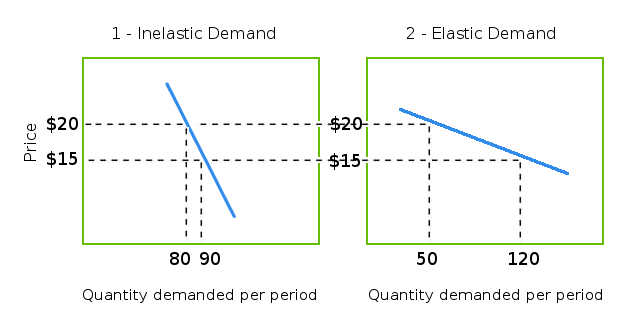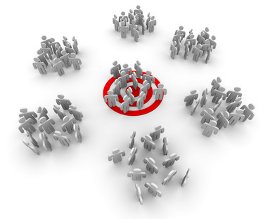It’s difficult to over-stress the importance of customer satisfaction. Sustained profitability is only possible through building customer value and satisfaction. Profit comes as a consequence of building customer value.
As Henry Ford said:
“Business must be run at a profit… else it will die. But when anyone tries to run a business solely for profit, then also the business must die, for it no longer has a reason for existence.”
Value Defined
Something that satisfies a consumer’s need or want has value in the eyes of the consumer. Whether or not a consumer will buy a product offering depends on whether what it costs them is greater or less than the product’s perceived value. Furthermore, when choosing between similar offers, a consumer will choose the product that offers the biggest difference between value and cost. Costs to the customer include not only monetary costs, but everything associated to acquiring it, such as time and hassle. For example, having to go and pick up concert tickets you’ve already paid for online adds an additional cost. Therefore, even if your product is more expensive, it will nevertheless be chosen if it carries more value in the eyes of the customer.
The difference between what the consumer perceives as the value of the product offering and its costs, are known by marketers as the delivered value. The goal is to ensure that the delivered value for your product is greater than the delivered value of the customer’s alternatives.
Customer Satisfaction Defined
 Customer satisfaction is closely related to customer expectations. Once acquiring a product, the customer will compare the actual performance of the product with what was expected. The customer will have feelings of pleasure if product performance meets expectations, and feelings of disappointment if it doesn’t. If actual performance exceeds expectations, the customer is highly satisfied or delighted.
Customer satisfaction is closely related to customer expectations. Once acquiring a product, the customer will compare the actual performance of the product with what was expected. The customer will have feelings of pleasure if product performance meets expectations, and feelings of disappointment if it doesn’t. If actual performance exceeds expectations, the customer is highly satisfied or delighted.
Customers form their expectations from a variety of sources such as friends, past experiences, competitors as well as the marketer’s messages and promises. A balancing act must be made here. If you set expectations too high with your messages, your customers are more likely to be disappointed. If you set them too low, fewer will buy. The most successful firms set expectations high and then are able to deliver performance to match – at a profit.
Creating Customer Value
Given the importance of customer value, it’s useful to use what Micheal Porter of Harvard calls the value chain as a tool to find ways to create more customer value. The value chain consists of company activities that create value and add costs in an organization. The primary activities in the value chain are:
-
Bringing materials into the company (inbound logistics)
-
Converting materials into finished products (operations)
-
Shipping out finished products (outbound logistics)
-
Marketing the products (sales and other marketing activities)
-
Servicing the products (customer service)
Primary activities have secondary support activities which include procurement (or purchasing), technology development, human resource management and firm infrastructure. These support activities may be handled by specialized departments or by multiple departments.
Your job as a marketer is to examine the costs and performance of each value-creating activity, and find ways to improve in each area. It’s helpful to compare competitors costs and performance in the value chain as a benchmark. If you can outperform your competitors you can gain a competitive advantage.
It’s important to note that internal departments sometimes act in ways to maximize their interests rather than those of the company or customers. For example, a credit department may take too long ensuring the credit worthiness of a customer to avoid the possibility of a bad debt. During this time, the customer is waits and waits, and the sales person becomes frustrated.
The solution to this problem, is to ensure the core business processes are managed smoothly, by using cross disciplinary teams to manage core processes.
It’s important to look beyond your own operations as well. Finding competitive advantages beyond your own operations will increase your chances of success. For example, Walmart’s suppliers are plugged directly into its inventory system so that they can track sales and replenish items as needed. This reduces the chances of stock outages.
The importance of customer retention
Often, organizations focus a lot or their marketing efforts on attracting new customers and far less attention retaining customers. Satisfied customers are loyal customers. Here are some interesting statistics from the Harvard Business Review (The Loyalty Effect by Frederick F. Reichheld and Thomas Teal):
-
It can cost 5 times more to get a new customer than to satisfy and retain a current customer
-
In a typical company, customers are defecting at the rate of 10-30% per year
-
The profitability of a customer tends to increase the longer the customer is retained
-
A 5% reduction in the customer defection rate can increase profits by 25% – 80%, depending on the industry
Relationship Marketing
Relationship marketing can be defined as a continuous process of creating additional value with individual customers and sharing the benefits over a lifetime of association. It involves the understanding of, and collaboration with, customers on an ongoing basis for the benefit of both parties. A strong relationship with your customer is ideal to retain that customer. Consider the following sales techniques:
Basic selling: The salesperson sells the product, nothing more.
Reactive selling: The salesperson sells the product and welcomes or encourages customer feedback such as complaints, comments and questions.
Accountable selling: The salesperson contacts the customer shortly after the sale to ensure the customer is satisfied with the product.
Proactive marketing: The sales person contacts the customer occasionally with information about improved or new products.
Relationship (partnership) marketing: The company works on an ongoing basis with the customer to find ways to help the customer reduce costs and improve performance.
Relationship marketing is most important when there are few customers in the industry and the profit margin is high. On the other side of the spectrum, basic selling may the only feasible avenue when product profit margins are low and there are numerous customers. Which you should use depends on your business. Let’s use an extreme example. If you’re selling hot dogs on a street corner, you can be friendly, but you can’t afford to develop a relationship with each customer. If you’re selling business jets, you can, and must, develop a relationship with your customers.
Calculating the cost of lost customers
Losing customers is costly and it’s important for companies to try to compute this cost. There are four steps in estimating the cost of losing a customer.
Step 1: Determine your retention rate. For a magazine, the renewal rate is a good measure. For an online retail store, a good measure might be the proportion of the previous year’s customers that shopped at the store during the current year. The point is to find a measure that’s appropriate for your business.
Step 2: Distinguish between the different causes of customer loss (or attrition) and focus on the ones that can be better managed. For example, there’s not much you can do when customers move from your region or go bankrupt. On the other hand, losing a customer because of poor after sales support is something that can be remedied.
Step 3: Estimate how much profit is lost when a customer is lost. We’ll use an example business (XYZ Company) to illustrate.
XYZ Company has 1,000 customers and loses 5% per year due to poor service. Therefore it loses 50 (10,000 x 5%) customer per year.
The average lost customer represents $9000 in lost revenue. This means, the company lost $450,000 in revenue.
The company has a profit margin of 15%. This means the company lost $67,500 ($450,000 x 15%) this year.
Step 4: Calculate how much it would cost to reduce the defection rate. If the cost of the reduction is less than the profit foregone, the measures should be implemented.
It’s vital to listen to your customers. Using the numeric technique outlined above can be handy but simply listening provides for the best insight as to what can be done to increase retention rates. Senior staff should be in tune with what customers are saying. Using basic surveys and simple interviews can go a long way in getting customer feedback.

 95% of your unhappy customers will never complain. They feel that complaining isn’t worth their effort, or they don’t know how, or to whom to complain.
95% of your unhappy customers will never complain. They feel that complaining isn’t worth their effort, or they don’t know how, or to whom to complain. Many services businesses are small (such as shoe repair shops and hair salons) and don’t use formal marketing techniques. There are also plenty of professional service businesses such as accounting and law firms that thought it was unprofessional to use marketing, and some still do, but this is changing.
Many services businesses are small (such as shoe repair shops and hair salons) and don’t use formal marketing techniques. There are also plenty of professional service businesses such as accounting and law firms that thought it was unprofessional to use marketing, and some still do, but this is changing. Customer satisfaction is closely related to customer expectations. Once acquiring a product, the customer will compare the actual performance of the product with what was expected. The customer will have feelings of pleasure if product performance meets expectations, and feelings of disappointment if it doesn’t. If actual performance exceeds expectations, the customer is highly satisfied or delighted.
Customer satisfaction is closely related to customer expectations. Once acquiring a product, the customer will compare the actual performance of the product with what was expected. The customer will have feelings of pleasure if product performance meets expectations, and feelings of disappointment if it doesn’t. If actual performance exceeds expectations, the customer is highly satisfied or delighted.
 In the old days, a market was a place in town where buyers and sellers got together. Today, marketers view “the market” as those who buy, or might potentially buy. The sellers constitute “the industry”.
In the old days, a market was a place in town where buyers and sellers got together. Today, marketers view “the market” as those who buy, or might potentially buy. The sellers constitute “the industry”. A discussion of core marketing concepts wouldn’t be complete without an introduction to the marketing mix. Anyone who’s ever taken an introductory marketing course will remember the marketing mix as the “4 P’s of marketing”. Everything else may have been forgotten, but the 4 P’s seem to stick. They are the tools marketers use to bring about the desired responses from their target markets.
A discussion of core marketing concepts wouldn’t be complete without an introduction to the marketing mix. Anyone who’s ever taken an introductory marketing course will remember the marketing mix as the “4 P’s of marketing”. Everything else may have been forgotten, but the 4 P’s seem to stick. They are the tools marketers use to bring about the desired responses from their target markets.